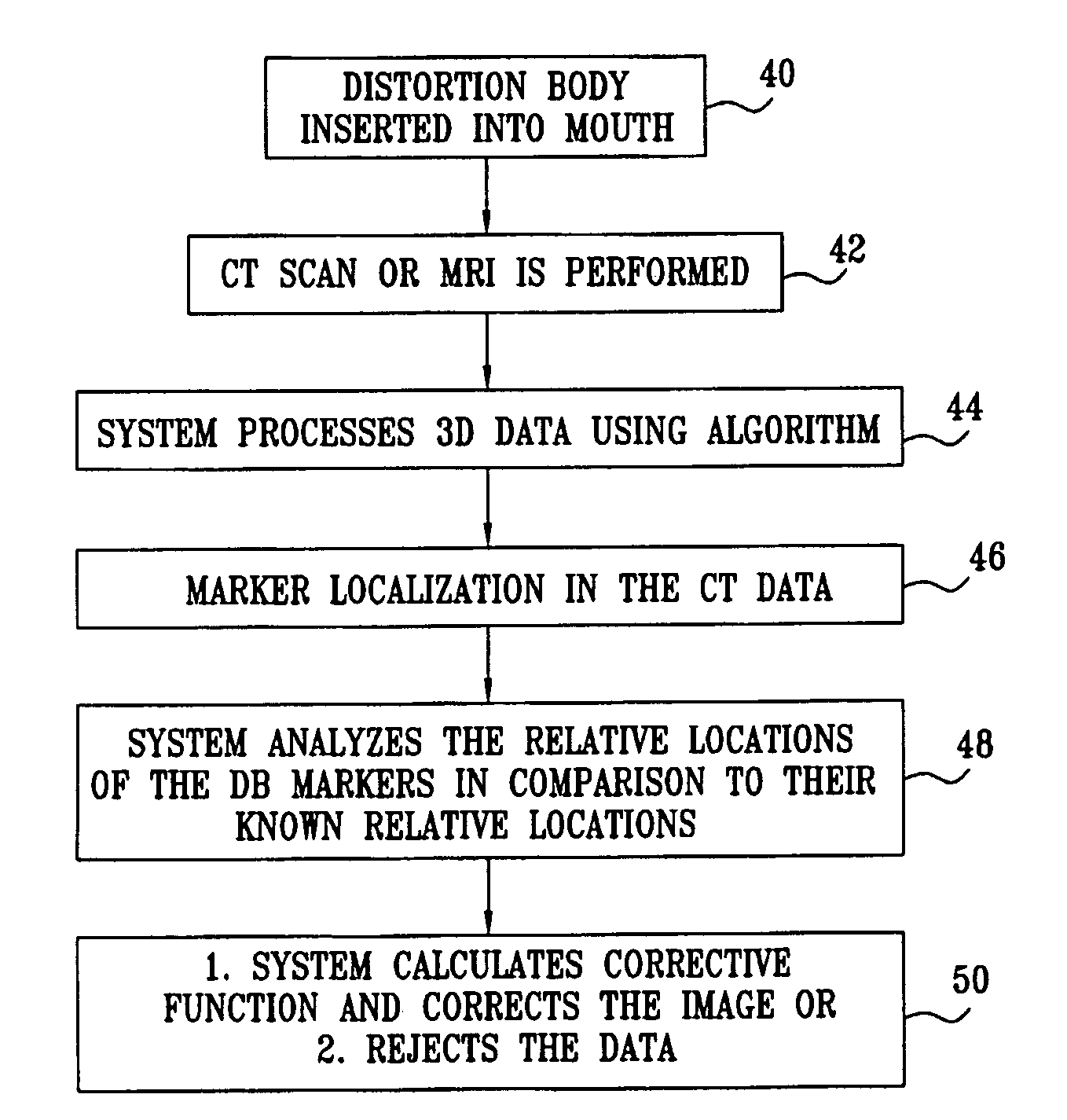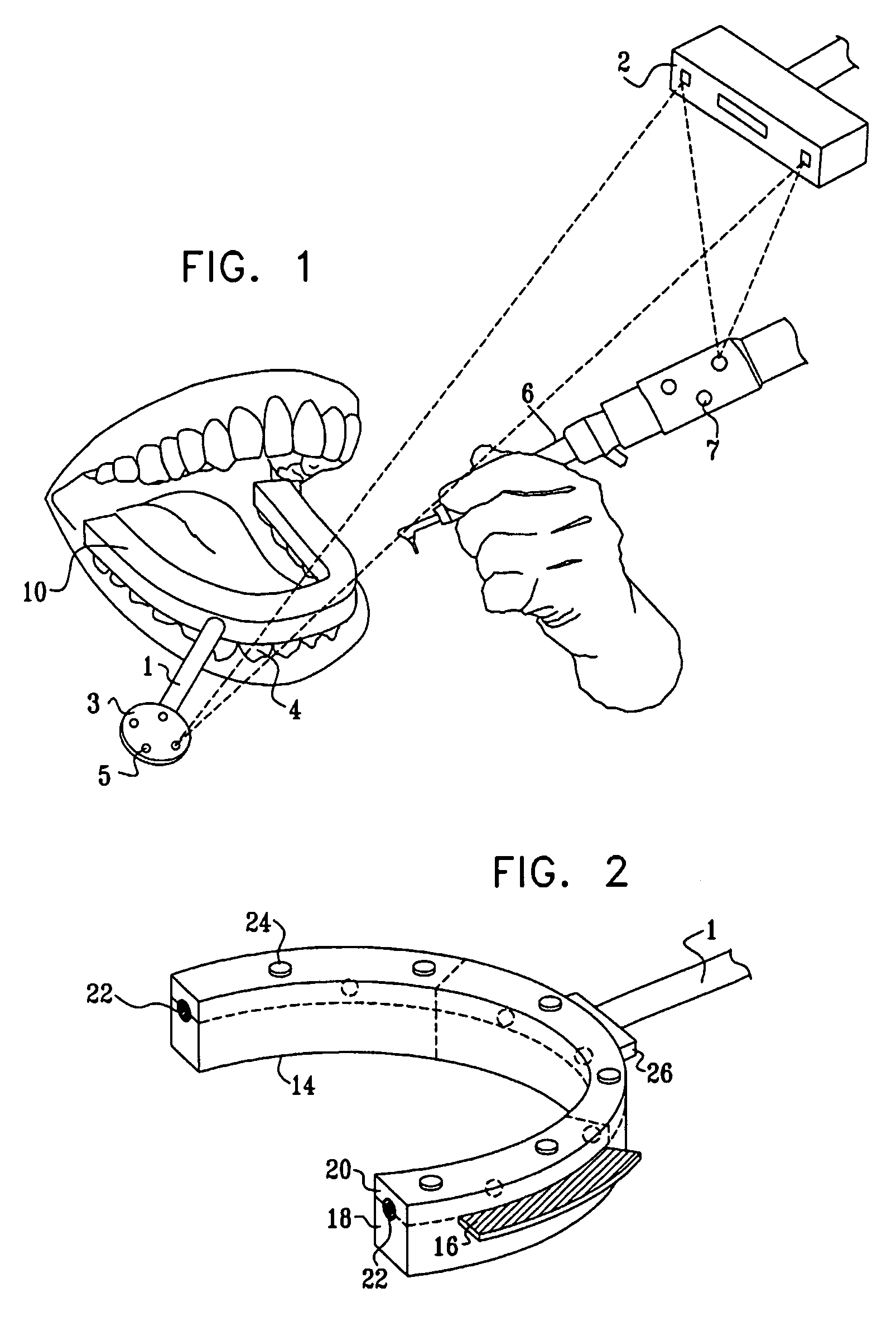Image guided implantology methods
a technology of image guided implantology and image correction, which is applied in the field of correction of scanned images of, can solve the problems of ct scanner data being distorted, damage to adjacent teeth, and possible perforation of cortical plates, and achieve the effect of accurate positional data
- Summary
- Abstract
- Description
- Claims
- Application Information
AI Technical Summary
Benefits of technology
Problems solved by technology
Method used
Image
Examples
Embodiment Construction
[0034]Reference is now made to FIG. 1, which illustrates schematically some of the parts of a system for performing image guided implantology, to illustrate the utilization of preferred methods and devices of the present invention. The teeth of the lower jaw 4 of a patient are shown, with a registration device 10 preferably having a horseshoe shape and adapted so that it sits comfortably in the mouth of the subject in a defined position relative to the subject's teeth. For clarity, the jaw is shown open in FIG. 1, but during the scanning process, the mouth would generally be closed to grip the registration device. Furthermore, although the complete registration device is shown in FIG. 1, in practice, when tracking is needed during a dental procedure, only part of the registration device would be left in the patient's mouth, to provide clear access to the tooth to be worked on, as explained hereinbelow. To the registration device is preferably attached, by means of a connection rod 1...
PUM
 Login to View More
Login to View More Abstract
Description
Claims
Application Information
 Login to View More
Login to View More - R&D
- Intellectual Property
- Life Sciences
- Materials
- Tech Scout
- Unparalleled Data Quality
- Higher Quality Content
- 60% Fewer Hallucinations
Browse by: Latest US Patents, China's latest patents, Technical Efficacy Thesaurus, Application Domain, Technology Topic, Popular Technical Reports.
© 2025 PatSnap. All rights reserved.Legal|Privacy policy|Modern Slavery Act Transparency Statement|Sitemap|About US| Contact US: help@patsnap.com



